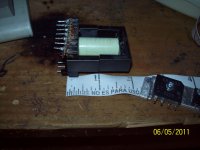SMPS LAYOUT for best results
Hi luchni
If you really would like to make a new PCB layout, I advice you to inspire from the below layout
In order to get a robust results.
And in order to put the driver in front of the MOSFETS + making the SHORTEST signal path from IR2110 to the G of MOSFET. witch is necessary
Spend some time now, and you will make an excellent LAYOUT
Or you can proceed with that one.
Thank you
Hi luchni
If you really would like to make a new PCB layout, I advice you to inspire from the below layout
In order to get a robust results.
And in order to put the driver in front of the MOSFETS + making the SHORTEST signal path from IR2110 to the G of MOSFET. witch is necessary
Spend some time now, and you will make an excellent LAYOUT
Or you can proceed with that one.
Thank you





